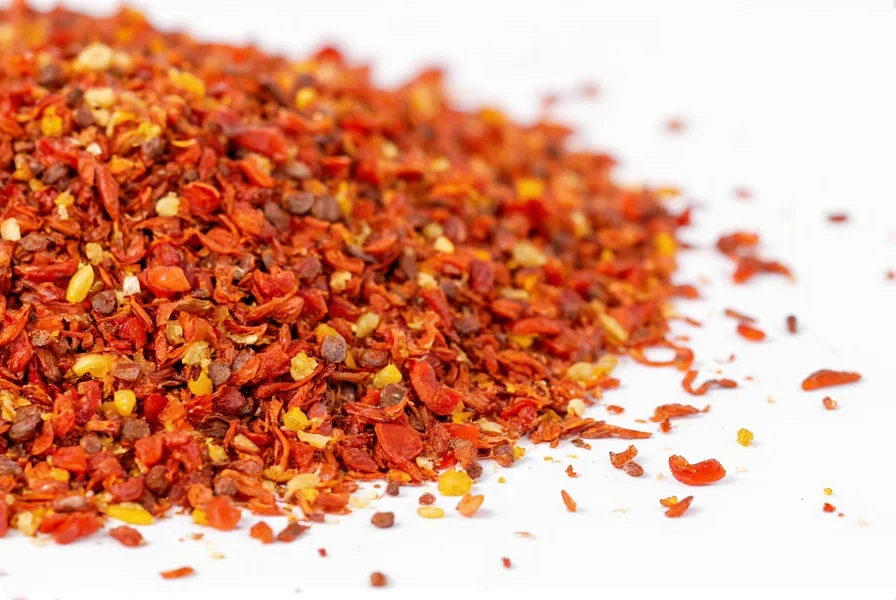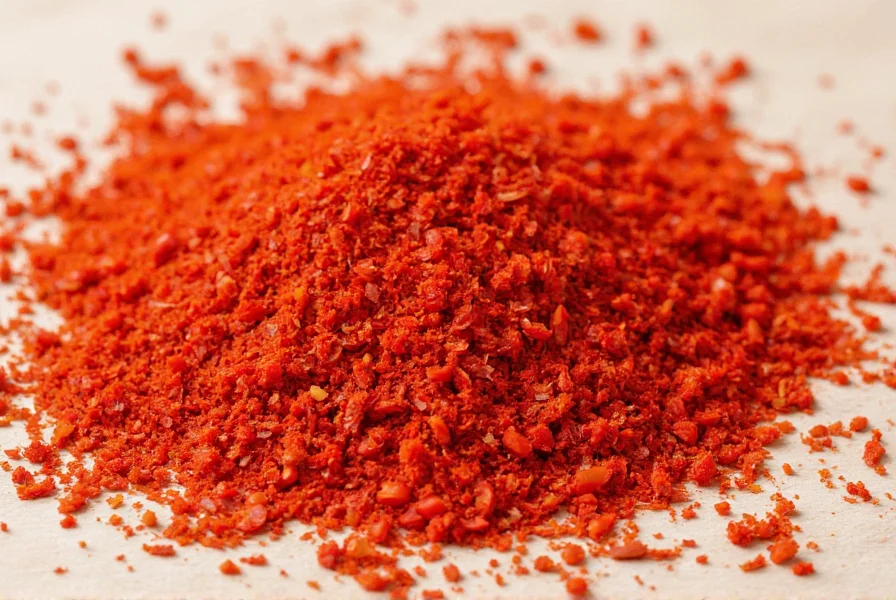Understanding the nuances of crushed red pepper can transform your cooking experience. This common pantry staple offers more complexity than many home cooks realize. Let's explore what makes this simple seasoning so valuable in kitchens worldwide.
What Exactly Is Crushed Red Pepper?
Crushed red pepper consists of dried, broken pieces of hot chili peppers. The most common varieties used include cayenne peppers, but manufacturers often blend multiple pepper types to achieve specific heat levels and flavor profiles. The characteristic red flakes you see in bottles contain both the pepper's flesh and seeds, which significantly impacts both the heat level and nutritional content.
Unlike finely ground cayenne pepper which contains only the powdered pepper, crushed red pepper maintains visible flakes and seeds. This physical difference affects how the spice behaves in cooking—flakes release heat more gradually than fine powders, creating a different flavor experience in dishes.
Crushed Red Pepper vs. Similar Spices
Many cooks confuse crushed red pepper with other spicy seasonings. Understanding these differences ensures you use the right ingredient for your recipes:
| Spice Type | Composition | Heat Level (Scoville) | Best Uses |
|---|---|---|---|
| Crushed Red Pepper | Coarsely ground dried chili peppers (often blend) | 30,000-50,000 | Pizza, pasta, sauces, finishing dishes |
| Cayenne Pepper | Fine powder of pure cayenne peppers | 30,000-50,000 | Cajun/Creole dishes, spice blends, baking |
| Chili Powder | Blend of ground chilies plus cumin, garlic, etc. | Varies widely | Tacos, chili, Tex-Mex dishes |
Nutritional Benefits of Crushed Red Pepper
Beyond adding heat, crushed red pepper delivers notable nutritional advantages. The capsaicin that creates the burning sensation has been studied for potential metabolic benefits. A single teaspoon (about 2 grams) contains:
- Approximately 6 calories
- 17% of daily vitamin A needs
- 8% of daily vitamin C requirements
- Small amounts of vitamin B6, potassium, and manganese
- Antioxidants including carotenoids
Research suggests capsaicin may temporarily boost metabolism and reduce appetite, though these effects are modest. The whole pepper composition in crushed red pepper provides more fiber and nutrients than pure capsaicin extracts.

How to Use Crushed Red Pepper Effectively
Mastering crushed red pepper usage elevates your cooking. Consider these professional techniques:
Timing Matters
Add crushed red pepper early in cooking for deeper, integrated heat that permeates the dish. For brighter, more pronounced heat, sprinkle it toward the end of cooking or as a finishing touch. The seeds contain concentrated capsaicin, so removing them before crushing creates milder flakes.
Culinary Applications
While commonly associated with Italian cuisine, crushed red pepper enhances diverse dishes:
- Stir into olive oil for dipping bread
- Sprinkle on pizza before or after baking
- Add to tomato sauces and soups
- Mix into salad dressings and marinades
- Enhance roasted vegetables
- Boost flavor in egg dishes
Storage Recommendations for Maximum Freshness
Proper storage preserves both flavor and potency. Keep crushed red pepper in an airtight container away from light, heat, and moisture. The ideal storage location is a cool, dark cupboard—not next to your stove where temperature fluctuations degrade quality.
For extended freshness, store in the refrigerator or freezer. While shelf life varies, most crushed red pepper maintains optimal flavor for 1-2 years when properly stored. Discard if the spice loses its vibrant red color or distinctive aroma.

Substituting Crushed Red Pepper
When you need crushed red pepper but don't have it available, consider these alternatives:
- Homemade version: Dry mild to hot chili peppers completely, then crush by hand or with a mortar and pestle
- Cayenne pepper: Use half the amount since it's more concentrated (1:2 ratio)
- Hot paprika: Provides similar color with milder heat
- Chipotle powder: For smoky variation with comparable heat
Remember that substitutions alter flavor profiles. Pure cayenne lacks the textural element of flakes, while chili powder introduces additional spices that may not suit your recipe.
Common Questions About Crushed Red Pepper
What's the difference between crushed red pepper and chili flakes?
Crushed red pepper and chili flakes are essentially the same product. The terms are used interchangeably in most regions, though some manufacturers may use slightly different pepper blends. Both refer to coarsely ground dried hot peppers containing both flesh and seeds.
Can I make my own crushed red pepper at home?
Yes, making homemade crushed red pepper is straightforward. Dry hot chili peppers completely (using a dehydrator or low oven), then remove stems and crush by hand or with a mortar and pestle. For milder flakes, remove seeds before crushing. Store in an airtight container away from light and heat.
Why does crushed red pepper contain different colored flakes?
The varying colors in crushed red pepper come from using multiple pepper varieties in the blend. Manufacturers often combine different maturity stages and types of peppers to create balanced heat and flavor. Darker flakes typically indicate more mature peppers with slightly different flavor profiles than brighter red pieces.
Is crushed red pepper gluten-free?
Pure crushed red pepper containing only dried peppers is naturally gluten-free. However, check labels if purchasing from bulk bins or certain brands, as cross-contamination can occur in facilities that process other products. Most commercial single-ingredient crushed red pepper is safe for gluten-free diets.
How can I reduce the heat of crushed red pepper in a dish?
To reduce excessive heat from crushed red pepper, add dairy products like yogurt or cream, which contain casein that binds to capsaicin. Acidic ingredients like lemon juice or vinegar can also help balance heat. Adding more of the other ingredients (like tomatoes or broth) to dilute the spiciness works well in sauces and soups.











 浙公网安备
33010002000092号
浙公网安备
33010002000092号 浙B2-20120091-4
浙B2-20120091-4